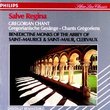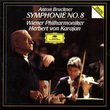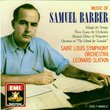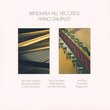| All Artists: Hector Berlioz, John Eliot Gardiner, Orchestre Revolutionnaire et Romantique Title: Berlioz: Symphonie fantastique /ORR * Gardiner Members Wishing: 0 Total Copies: 0 Label: Philips Release Date: 3/16/1993 Genre: Classical Style: Symphonies Number of Discs: 1 SwapaCD Credits: 1 UPC: 028943440226 |
Search - Hector Berlioz, John Eliot Gardiner, Orchestre Revolutionnaire et Romantique :: Berlioz: Symphonie fantastique /ORR * Gardiner
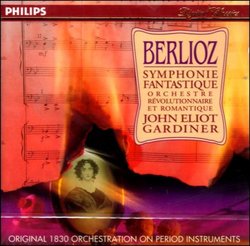 | Hector Berlioz, John Eliot Gardiner, Orchestre Revolutionnaire et Romantique Berlioz: Symphonie fantastique /ORR * Gardiner Genre: Classical
No Description Available. Genre: Classical Music Media Format: Compact Disk Rating: Release Date: 16-MAR-1993 |
Larger Image |
CD DetailsSynopsis
Product Description No Description Available. Genre: Classical Music Media Format: Compact Disk Rating: Release Date: 16-MAR-1993 Similarly Requested CDs
|
CD ReviewsNothing beats the original. Stephen C. Troy | Pennsylvania | 10/06/1999 (5 out of 5 stars) "Think you've heard the Symphonie Fantastique before? Not like this, you haven't. This CD uses the original orchestration of 1830 - instead of two tubas, we get the serpent and the ophicleide. The pairing of these two with the bassoons in the dies irae of the last movement is indeed frightening (almost as much as my personal trombone playing, but not quite). The cornet "a piston" obbligato in the second movement is a gem and shows off the capabilities of the newly-invented valved instrument compared to the natural trumpets and horns also used in this recording. The tympani - calfskin heads palyed with sponge-covered mallets - also sound remarkable.But it's not just the orchestration that sets this CD apart from the others. Recorded in the same hall where the premiere was given, the balance and clarity achieved shine light on inner parts not normally heard. You can actually get a feel for how strikingly original this piece must have sounded in 1830. This performance has a definite "edge" and you can just imagine how much fun it must have been to record it!" An amazing period-instrument Berlioz Fantastique Yi-Peng | Singapore | 02/01/2001 (5 out of 5 stars) "This is a revised version of my earlier review, and I hve to rewrite it because I was in a hurry to submit it and did not put enough thought into that one.With Gardiner's period-instrument recording of the Berlioz Fantastique, we find ourselves a part of the music's interesting world that fascinated the Parisian audience at its premiere. Recorded in the original venue of its 1830 world premiere, it proves, along with Gardiner's companion Polygram recording of the complete Beethoven symphonies, that period performances need not be anaemic and boring, including this one, especially when this performance has a high voltage and bings the cork cohesively. The suspenseful, spellbinding and peerless playing of the Orchestre Revolutionaire et Romantique is enough to give Roger Norrington's London Classical Players a run for their money, and every small detail shines through perfectly. The admittedly dry accoustic, which seems like a menace to some, shows its positive side here by allowing this to happen, and the Philips engineers have risen to the challenge of producing perfect srecorded sound within such accoustics.Gardiner sets the romantic tone of the piece with his opening Reveries, showing the wide range of emotions in the artist in relation to his unattainable beloved. When he reaches the main Allegro section, he gives the movement ample forward thrust and impetus, and brings out both the hysteria and the sweet innocence of the idee fixe at the same time. The Ball sequence that follows sways with a lyrical edge and, though the period violing may lack the full sweetness of modern-day instruments today, it is still an enjoyable listen, especially when it contains the cornet obligato. For the next part of the work, the performance quietens down with the onset of the Scene in the Country. The wind players bring out the dream-like quality of the movement, aided by the shimmering strings that still sound beautiful despite their age. But in the lsat two movements, including the climax, Gardiner gets the blood racing again with a menacing and ferocious March to the Scaffold (replete with blazing brass) and a macabre Dream of a Sabbath Night (replete with a ludicrous Dies Irae parody, a witches' round dance, and added special effects from the use of the ophicleide and serpent) that increase the blood pulse sharply and work its way up to a devastating climax and eventual big finish. To sum everything up, this digital Fantastique is certain to be counted among the top recommendations of this much-loved work, and Gardiner proves himself to be the period-instrument Sir Colin Davis. This recording also makes a valuable companion piece to the Beethoven. Thank you VERY MUCH John Eliot, and well done to everybody who have helped Gardiner make this successful recording. And let us hope that Philips will record more, including period-instrument Brahms and Mendelssohn symphonies." A Portrait of the Artist as a Young Man. Bob Zeidler | Charlton, MA United States | 12/05/2003 (5 out of 5 stars) "Why not imagine that today is December 5, 1830, rather than December 5, 2003? And that you are a Parisian concertgoer, more or less knowledgeable about the music of the time, including that of Ludwig van Beethoven, whose symphonies were just in the process of "being discovered" by Parisians of the time? Place yourself, if you will, in the concert hall of the Paris Conservatoire on this date, to hear the first public performance of any work by a young French composer - still six days shy of his 27th birthday - who, in the previous two years, had been dramatically affected by hearing Beethoven's symphonies.
That Frenchman was of course Hector Berlioz, and his work that received its premiere on December 5, 1830 was his Symphonie fantastique. And, if you had been one of the concertgoers at this premiere, as you proceeded to your seat, you would take in the vista of an orchestra whose likes (and size) you had never seen before, one with four harps across the front, a battery of timpani arrayed across the rear, and, as well, a number of woodwind and brass instruments never before seen in such an ensemble. An unusually young man with an unruly mop of red hair would take the podium, thence to lead the orchestra in a near-hour-long work that would affect the course of musical history for a century to come. The work would be an instant success, and young Berlioz, unruly red mop and all, would become an overnight celebrity as a result. What John Eliot Gardiner and his Orchestre Révolutionnaire et Romantique have endeavored to do in this recording is nothing less than to recapture the excitement of that premiere, right down to details such as the actual performance venue and the incorporation of period instruments used by Berlioz then but seldom since. This is as close as one could possibly come to recreating that evening, and the recreation is a splendid, even smashing, success. Listening to this recording is - for me, anyway - almost like hearing the work for the first time. Certainly, it is the first time the work has sounded so fresh, and not the battered old war horse that we're used to hearing, both in concert and on recordings. While the freshness (and the clarity) are there from the get-go, the real differences begin to show up in the second movement, "Un bal," where four harps (for which Berlioz wrote in a new style not heard before) are arrayed across the front of the orchestra, with the recording perfectly capturing the horizontal space they occupy. Later in this movement, it is easy to pick out the unique timbre of the cornet a piston as being readily distinct from the valveless trumpets also in the Berlioz orchestra. (This is somewhat of an anomaly, but an excusable one, since the instrument only became available sometime before Berlioz revised the work after this premiere performance.) The third movement - "Scene aux champs" - adds an aspect of three-dimensional depth, with its English horn in the foreground echoed by the oboe nicely placed in the background. At the end of this movement, so obviously a tribute to Beethoven's Pastoral Symphony which Berlioz had heard for the first time just the previous year, the battery of timpani arrayed across the full rear of the orchestra give a splendid sense of distant thunder. But it is in the last two movements where the original Berlioz intentions, as recreated by Gardiner, are best realized, particularly with the snarl and buzz coming from the ophicleide and serpent (later replaced by the bass tuba, but not with nearly as exciting an effect), and the slimey , penetrating bite of the E-flat sopranino clarinet. As well, the bells that Gardiner has at hand for the "Dies Irae" section of the final movement are appropriately ominous in their sonority. The performance ends in a glorious rush, resplendent in its brass textures owing to Gardiner's choice of period instruments. In point of fact, much of the instrumental texture heard in these two movements, as well as Berlioz's use of the cornet in the second movement, is owed to his willingness to "borrow" instruments commonly used in military bands of the time but not in symphony orchestras. In the main, this was a practice not picked up by subsequent composers, but Gustav Mahler for one had a similar approach to instrumentation (and in fact was an ardent admirer of this Berlioz work). We hear the work differently these days. Modern instrument construction provides a wider dynamic range, brighter timbres and more certain intonation (although Gardiner's musicians have no intonation problems whatsoever). The newcomer to Gardiner's recreation might at first think this approach to be on the subdued side, on account of the smaller absolute range of dynamic possibilities with period instruments. But the range of instrumental textures these period instruments achieve comes across as wider and more distinctive, rather than the more homogenized and "standardized" timbres we've become acclimated to: the timbral range more than makes up for any - and mostly inconsequential - reduction in dynamic range. Heard in this freshly-reconstructed period-instrument light, the Symphonie fantastique is a marvel of clarity and originality, in my opinion superior in its dramatic and poetic impact over the later-revised version that Berlioz was to produce, mainly to deal with the exigencies and economics of performance practice and period instrument availability. If you are to have as few as two recordings of this work, this needs to be one of those two. Happy anniversary, Louis-Hector Berlioz, for this breakthrough work! Bob Zeidler" |

 Track Listings (5) - Disc #1
Track Listings (5) - Disc #1

![Sly & the Family Stone - Greatest Hits [Epic]](https://nationalbookswap.com/cd//m/63/8263/18263.jpg)

